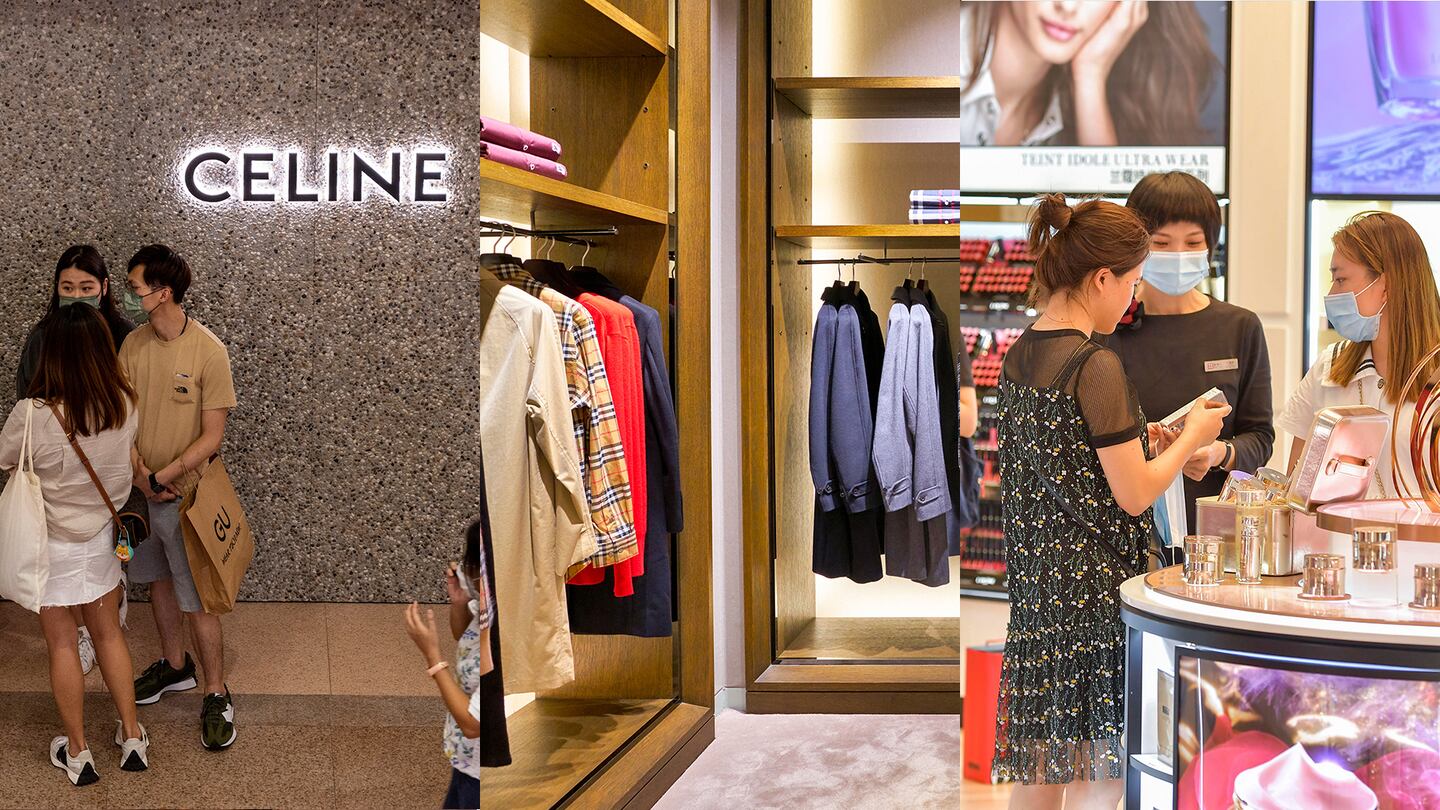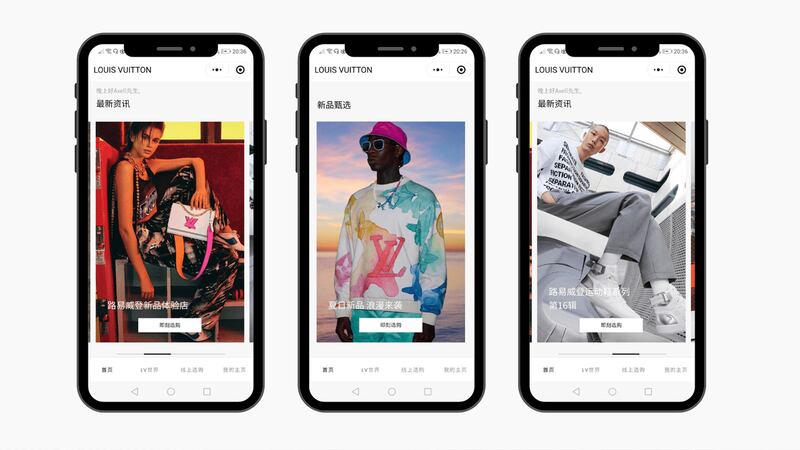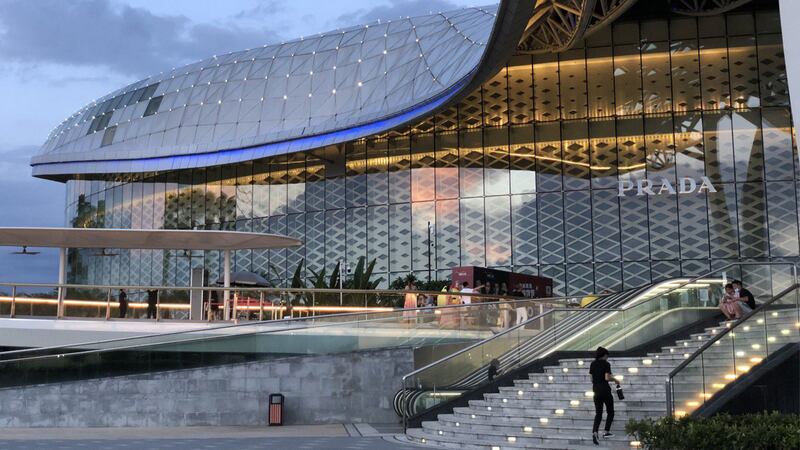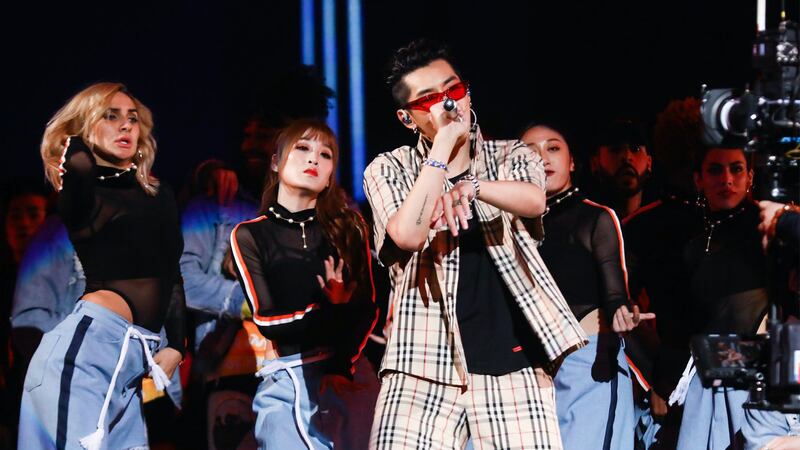
The Business of Fashion
Agenda-setting intelligence, analysis and advice for the global fashion community.

Agenda-setting intelligence, analysis and advice for the global fashion community.

Many international fashion and beauty companies have looked to China for sales salvation during the Covid-19 pandemic and the country has largely delivered.
In recent quarters, luxury names, beauty brands and sportswear players running the gamut from LVMH to L’Oréal to Lululemon, have reported outstanding growth in the world’s second-largest economy.
The growth has been driven by two key factors: first, China’s swift nationwide quashing of the Covid-19 outbreak in the early months of 2020 and second, millions of local consumers — some of whom resorting to shopping at home rather than spending abroad as they would have before travel restrictions kicked in; others investing in health and wellness amid pandemic-induced lifestyle changes — ramping their already-robust spending.
Then there’s the third big factor: China’s broader positive economic trajectory. The country was, after all, the only major economy to achieve growth in 2020, with GDP rising 2.3 percent and data points ranging from retail sales to manufacturing activity looking strong in the second half.
ADVERTISEMENT
But a different narrative is unfolding in 2021, one that could lead the economy into stagflation — when a country experiences both a slowing or stagnating economic growth and rising inflation. It’s a potentially painful situation that should give pause to companies whose growth plans hinge on a robust Chinese economy.
Kelvin Wong of CMC Markets said key indicators in recent months suggest the country could be shifting gears, in ways that could make a big dent in consumer demand amid rising prices and slowing economy driving up unemployment and lower wage growth if it carries on over the medium to long-term.
“[S]lower growth and higher prices tend to lead to a stagflation environment and, if entrenched, it may be challenging for counter-cyclical fiscal and monetary policies to reverse [stagflation’s] adverse effects,” Wong said.
The Stagflation Scenario
Concerns have been rumbling for several months now that the country may sooner rather than later find its economy in a deep stagnation or a stagflation scenario. While GDP forecasts set for the year are still looking respectable relative to other big economies — OECD estimates from May forecast China’s GDP to grow 8.5 percent this year, compared to 6.9 percent growth for the US — there are worrying pressure points.
A case in point are the official and private business surveys suggesting a weakening in key economic drivers. The latest data from the country’s National Bureau of Statistics (NBS) showed that China’s official manufacturing Purchasing Managers Index (PMI, a measure based on monthly industry surveys) fell to 50.1 in August from 50.4 in July, which is still above the 50-point mark that separates growth from contraction. However, the official non-manufacturing PMI in August was 47.5, well down from July’s 53.3. This marks the first decline since February 2020, when the country was in the grips of the Covid-19 outbreak.
“The latest surveys suggest that China’s economy contracted [in August] as virus disruptions weighed heavily on services activity,” Julian Evans-Pritchard, senior China economist at Capital Economics, wrote in a note. “Industry also continued to come off the boil as supply chain bottlenecks worsened and demand softened.”
Though, Evans-Pritchard noted, the fall in the services sector was largely due to an outbreak of the highly contagious Delta variant of Covid-19 that began in late July, disrupting tourism and the person-to-person service sector, weakness in China’s domestic consumption was already noticeable for months.
ADVERTISEMENT
High production costs could be squeezing corporate profit margins, especially those selling directly to consumers.
Another consideration is China’s recent “Covid Zero” strategy. Under the policy, outbreaks of the virus are stamped out with lockdowns and travel restrictions, creating supply chain pressures and fuelling freight rate hikes, which are at record levels and a source of inflation. In August, the world’s third-busiest port, in the eastern Chinese city of Ningbo, was partially shut when a worker tested positive for Covid-19. It was the second major Chinese port shutdown in a matter of months.
Keeping producer price inflation under control has proven elusive for policy makers in China. The producer price index for the country’s industrial sector for July recorded a 9 percent year-on-year change, its seventh consecutive monthly increase. At a state council meeting in May, chaired by Premier Li Keqiang, the need for policy action to prevent spillover into consumer prices was emphasised, though no concrete plan has been disclosed. Economists are now warning that high production costs could be squeezing corporate profit margins, especially those selling directly to consumers.
And though China’s official urban unemployment rate was 5.1 percent in July, Wong questioned whether that might be painting an “over-optimistic” picture of the labour market, particularly since the country’s significant population of migrant workers are not included in that rate. As for young people aged between 16 and 24, their jobless rate was 16.2 percent in July.
The full repercussions on fashion and retail companies, in China and beyond, remains to be seen. But freight and other rising costs — including for cotton and other raw materials — mean that companies must decide whether and by how much to pass on the price inflation to consumers, at a time when demand appears to be diminishing. Unlike international brands such as Crocs, Michael Kors and Ralph Lauren, Chinese brands have yet to signal in their recent earnings reports their intention to raise prices.
Indeed, consumer prices have remained relatively muted, though core consumer inflation (excluding food and energy costs) rose 1.3 percent in July, the highest rate in 18 months, Wong of CMC Markets explained, indicating that “producers may have started to pass on the higher cost of production to consumers.”
Uneven Impact
While international luxury companies such as Chanel, Prada, Balenciaga and Louis Vuitton seem to be able to raise prices at regular intervals without denting consumer desire for their products, other global brands responding to price pressures in their supply chains will need to have a good case to pass higher costs to Chinese consumers.
Unlike international brands, Chinese brands have yet to signal in their recent earnings reports their intention to raise prices.
“I think what we are continuing to see is that within the mid-market or upper mid-market, foreign brands are facing a variety of challenges in maintaining and growing market share,” said Ben Cavender, managing director of China Market Research Group. He added that success for non-Chinese companies might be found in “smaller niche brands that are seen as being the best of their specific category or where they are seen as offering brand heritage or an interesting designer or interesting concept that will still get domestic consumers to open their wallets.”
ADVERTISEMENT
Put another way, regardless of whether a brand raises prices in China as a result of inflationary pressures, it likely won’t be the price alone that influence consumers’ decisions to make a purchase.
This said, with a greater proportion of Chinese consumers feeling pessimistic about their economic futures post-pandemic, it stands to reason that this will cause at least some consumers to start tightening their belts. Particularly for discretionary categories like fashion, that means even a whiff of stagflation casts ominous clouds.
时尚与美容
FASHION & BEAUTY

Chinese Star Lu Han Cuts Ties With Audemars Piguet
The studio of Chinese actor and singer Lu Han issued a statement on social media platform Weibo on Sunday that he is terminating his relationship with Swiss watch brand Audemars Piguet. Lu Han is one of China’s most in-demand celebrity ambassadors and has collaborated with brands such as Cartier, Gucci and Boucheron. Having been an ambassador for Audemars Piguet since 2018, he stated that he is ending the relationship because “improper comments made by the Audemars Piguet brand seriously violate the one-China principle.” Chinese netizens had been calling on Lu Han to cut ties with Audemars Piguet following the resurfacing of an interview first published in Watchonista in 2020, in which the company’s chief executive, François Henry Bennahmias, refers to Taiwan as “an ultra-modern, high-tech country.” (BoF)
Ruyi Group’s First Half Net Loss Widens to $7 Million
Ruyi Group’s once-stated ambition to become China’s LVMH Group continues to fall short. According to its 2021 half-year report, the group, based in Jining, Shandong province, reported total revenue of 261 million yuan ($40.4 million), down 20.43 percent year-on-year, while its net loss widened 392.9 percent to 44.75 million yuan ($6.93 million). The group operates three major businesses: textile manufacturing, apparel and textile raw material trading. Its largest business is apparel, which experienced the heaviest losses. Revenue dropped 44.67 percent and gross margin declined 12 percent; the share of Ruyi Group revenue attributed to apparel fell from 76.57 percent to 53.24 percent. (BoF)
China’s JNBY Group Annual Net Profit Up 86.7%
Chinese fashion retailer JNBY Group announced its fiscal 2021 results ended Jun. 30, with total revenue of 4.13 billion yuan ($638.56 million), up 33.1 percent year-on-year and net profit of 647.2 million yuan (just over $100 million), up 86.7 percent. Over the period, the group’s total number of physical retail outlets increased from 1,855 to 1,931. The group also said its membership programme has become a revenue driver for the group, with 4.9 million members contributing about 70 percent of revenue. (BoF)
科技与创新
TECH & INNOVATION

Tencent Joins China’s Luxury E-Commerce Platform Battlefield
China’s luxury e-commerce business has long been dominated by major platform players, such as Alibaba’s Tmall and JD.com, becoming particularly pivotal for product and brand research and discovery. Now Tencent’s WeChat, with its 1.2 billion monthly active users, is getting into the platform business. The company launched its mini-programme aggregation platform Tencent Huiju in March and recently announced the formation of a luxury channel called Famous Products within Tencent Huiju, which includes major players such as Louis Vuitton, Burberry and Valentino. Customers using the new platform will be redirected to brand-owned mini-programmes to complete their purchases. (BoF)
JD.com Has a New President, JD Retail Names New CEO
Xu Lei is the new president of JD.com and will lead the day-to-day operations of the company’s various business units, while founder, chairman and chief executive, Liu Qiangdong, also known under his English name Richard Liu, will devote more time to long term strategies, mentoring management professionals and “contributing to the revitalisation of rural areas,” according to a press statement. (BoF)
消费与零售
CONSUMER & RETAIL

China Tourism Group Duty Free Sees First Half Revenue Rise 84%
China Tourism Group Duty Free (CTGDF), which last year became the world’s largest travel retailer, posted an 84 percent year-on-year increase in first-half revenues, to 35.53 billion yuan ($5.5 billion). Of the total, 70.6 percent was generated by the group’s store in Haitang Bay, Sanya, where sales grew by 210 percent to 18.53 billion yuan ($2.8 billion). (BoF)
Hong Kong Retail Growth Slowed Again in July
Hong Kong’s retailers saw consumption growth slow more than expected in July as social distancing measures to control the Covid-19 virus continued to constrain spending and local shoppers waited to receive electronic vouchers in August. Retail sales hit $27.2 billion Hong Kong Dollars ($3.5 billion), up 2.9 percent from a year ago, according to a government report. That’s well short of the median economists’ forecast of 10 percent growth. Retail sales volume rose 0.9 percent, also short of expectations of 6.9 percent. (Bloomberg)
政治,经济与社会
POLITICS, ECONOMY, SOCIETY

China to Ban Celebrities With ‘Incorrect’ Politics, Limit Pay
President Xi Jinping ordered sweeping changes to the entertainment industry, with the broadcast regulator moving to ban film stars with “incorrect” politics, cap salaries and rein in the celebrity fan culture. Television companies and internet platforms were told to “strictly control the selection of programme actors and guests, and uphold political literacy, moral conduct, artistic level and social evaluation as selection standards,” according to a statement from the National Radio and Television Administration. (Bloomberg)
Alibaba Pledges $15.5 Billion to ‘Promote Common Prosperity’
Alibaba Group announced Friday that it plan to invest 100 billion yuan ($15.5 billion) to “promote common prosperity” in China. The new Alibaba Group Common Prosperity Advancement Working Committee, led by Alibaba Group chairman and chief executive Daniel Zhang, will be tasked with delivering initiatives focused on technological innovation, economic development, high-quality employment creation, care for vulnerable groups and the establishment of a 20 billion yuan ($3.1 billion) common prosperity development fund by 2025. (BoF)
China Decoded wants to hear from you. Send tips, suggestions, complaints and compliments to our Shanghai-based Asia Correspondent casey.hall@businessoffashion.com.
With consumers tightening their belts in China, the battle between global fast fashion brands and local high street giants has intensified.
Investors are bracing for a steep slowdown in luxury sales when luxury companies report their first quarter results, reflecting lacklustre Chinese demand.
The French beauty giant’s two latest deals are part of a wider M&A push by global players to capture a larger slice of the China market, targeting buzzy high-end brands that offer products with distinctive Chinese elements.
Post-Covid spend by US tourists in Europe has surged past 2019 levels. Chinese travellers, by contrast, have largely favoured domestic and regional destinations like Hong Kong, Singapore and Japan.